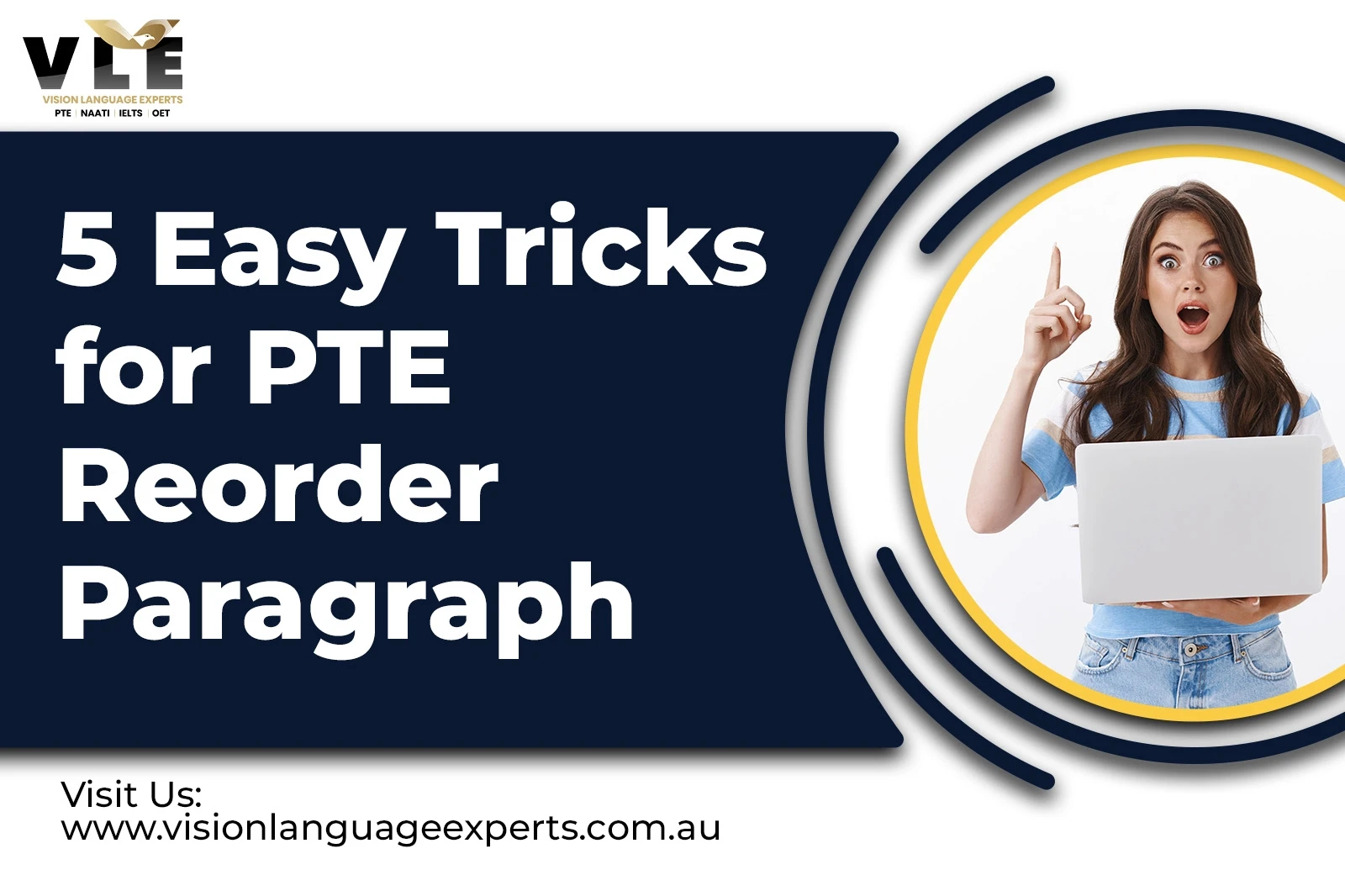PTE Academic is a popular English language proficiency exam taken by students, professionals, and migrants worldwide. Among its reading tasks, one of the most challenging for many test-takers is the Reorder Paragraph section. This task requires arranging disordered sentences into a coherent paragraph. While it may seem daunting, understanding a few simple strategies can make it much easier. Below are 5 proven tricks that will help you excel in the Reorder Paragraphs section, enhancing your reading score significantly.
The foundation of sentence structure often lies in the relationship between nouns and pronouns. In context of PTE Reorder Paragraph task, identifying these elements is important for understanding the flow of information across sentences. Here is how it works:
For instance, consider the following sentence:
"It is evident that the research findings were impactful."
To reorder this, you must first find the sentence that introduces the research findings (noun), then pair it with this sentence where the pronoun it refers to those findings.
The key takeaway here is: always look for a sentence that introduces a concept (noun) first, followed by sentences that elaborate on it using pronouns.
Another important strategy for tackling reorder paragraphs is understanding the general to specific pattern. Sentences in well-organized paragraphs usually follow a natural progression, starting with a broad or general statement, which is then narrowed down by specific details or examples.
For example:
The general sentence introduces the broader context, while the specific one provides further detail or evidence. When reordering paragraphs, identify which sentences provide overarching ideas or background information, and which ones narrow down to specific points or examples. Place the general statements first, followed by the specifics.
One of the most efficient ways to solve reorder paragraph questions is to identify pairs of sentences that logically follow each other. This method is particularly helpful when the sequence of the entire paragraph isn’t immediately clear. Instead of focusing on the whole paragraph, narrow your attention to two sentences that clearly relate.
How do you identify a pair? Look for:
For example:
Here, this data clearly refers to the data mentioned in the first sentence, creating a logical pair.
Linking words and phrases act as signals that sentences are connected. These words help establish the logical flow of ideas, making them excellent clues for reordering paragraphs. Some common linking words to watch for include:
For example, if a sentence begins with however, it is likely contrasting a statement made in the previous sentence. Similarly, if a sentence starts with therefore, it is drawing a conclusion from something mentioned earlier. By identifying these connecting words, you can piece together the logical flow of the paragraph more easily.
A strong understanding of the sequence of events is critical when dealing with reorder paragraphs. In many cases, the sentences in a paragraph describe events that occur in a logical, chronological order. Recognizing this order can provide key insights into how the sentences should be arranged.
For example:
In this case, the sequence of events follows a clear timeline: interviews are conducted first, data analysis comes second, and publication happens last. By understanding the chronological order, you can easily determine the correct arrangement of these sentences.
While these five strategies—understanding nouns and pronouns, applying the general-to-specific rule, using the pairing method, identifying linking words, and recognizing the sequence of events—are crucial for cracking the reorder paragraphs task, consistent practice is essential for mastering them. The more you familiarize yourself with these patterns, the easier it will become to identify and arrange sentences accurately in the exam.
In addition, utilizing online platforms for PTE practice can further enhance your skills. PTE practice portal offers sample reorder paragraph tasks that mimic real exam questions, allowing you to apply these strategies in a practical setting. Be sure to practice frequently to sharpen your reading and sequencing skills before your test day.

Vishal Kapoor is having 6+ years of expertise in instructing PTE and NAATI, both in Australia and internationally, with an impressive 100% success rate among students. As a certified expert by Pearson in PTE and NAATI, Vishal Kapoor has developed a comprehensive teaching approach derived from extensive research and a wealth of teaching experience. Tailoring coaching techniques to individual skill levels and target scores, Vishal's guidance has proven instrumental in helping numerous aspirants attain their desired scores. With a commitment to personalized tips and solutions, Vishal Kapoor is dedicated to facilitating the success of those preparing for PTE and NAATI examinations.
Introducing the AI PTE Portal , meticulously designed to closely simulate the actual PTE exam experience. Crafted by Vishal Kapoor, this innovative AI portal ensures an authentic and immersive preparation environment for PTE aspirants
